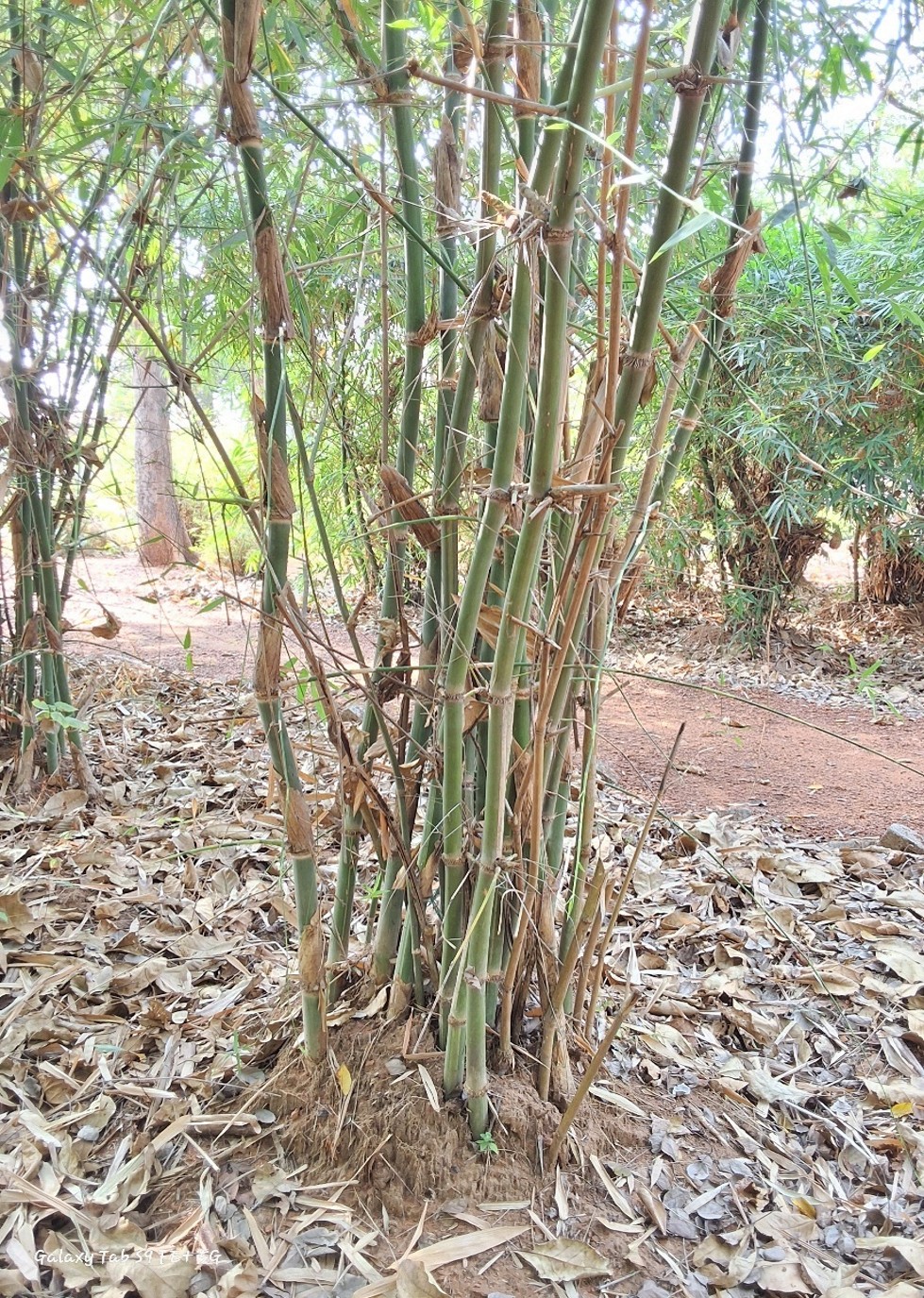Bambusa tulda var. striata

Bambusa tulda var. striata
Bambusa tulda var. striata (commonly known as Pette Idi or Striped Bamboo) is a variety of Bambusa tulda that is distinguished by its striking appearance, characterized by its green culms with yellowish to creamy-white longitudinal stripes. This variety is clumping, dense, and erect, typically growing to a height of 8 to 12 meters and a diameter of 6 to 10 cm. The culms begin as green but develop more prominent stripes as the bamboo matures. The internode length ranges from 25 to 40 cm, and the culm sheath starts as green, turning pale yellow or brown as it matures. The adaxial surface of the culm sheath is smooth and glabrous, while the abaxial surface is slightly hairy, with ciliate margins featuring soft bristles.
The leaves of Bambusa tulda var. striata are oblong-lanceolate with pointed tips, measuring 15 to 25 cm in length and 2 to 4 cm in width. This variety prefers altitudes ranging from 500 to 1200 meters and thrives in well-drained, fertile loamy soils but is adaptable to a variety of soil types. The bamboo is native to India, especially in the eastern and northeastern states such as Assam, West Bengal, Odisha, and Bihar, and has been introduced to other tropical regions for ornamental and commercial purposes.
Bambusa tulda var. striata is commonly found in moist deciduous forests, along riverbanks, and in hilly terrains. It grows best in areas with an annual rainfall range of 1500–2500 mm. Its inflorescence is a large panicle with spicate branching. The empty glumes are ovate, acute, faintly nerved, and the flowering glumes are similar but larger with ciliate edges. The stamens are exserted, and the anthers are glabrous, with fine hairs on the style. Flowering occurs rarely in gregarious cycles, typically every 30 to 50 years, with flowering reports in parts of India, particularly in Assam and West Bengal. The seeds are small and have a low germination rate, and the bamboo is often propagated through vegetative means such as clump division, offsets, culm cuttings, and tissue culture.
This bamboo variety is particularly popular for ornamental purposes due to its attractive striated appearance. Additionally, it is used in construction for scaffolding, poles, furniture, and building materials. It is also used for fencing, boundary markers, paper and pulp production, and craftwork (such as baskets and mats). Like many other bamboo species, it plays an important role in soil erosion control.
Listen Audio:
Need assistance? BRTC Faculty